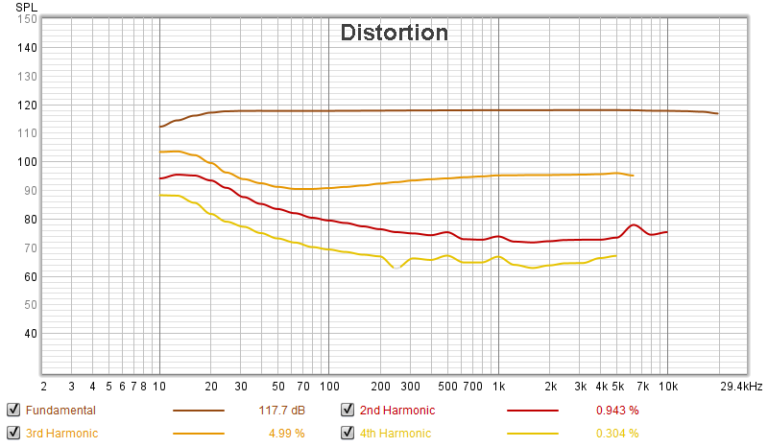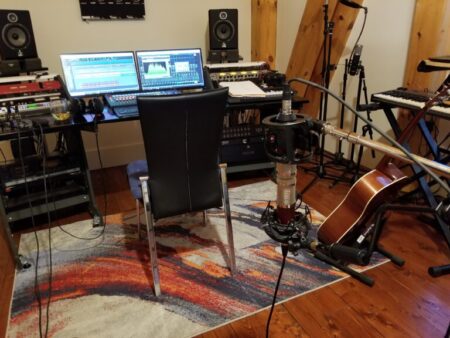Your cart is currently empty!
Transformative Experience Pt II

Since the last entry, I’ve got a handful of Transformer Coupled builds under my belt including three Sterling ST55s and two RS/47Ts. This led to some minor tweaks to the circuit boards – mainly for fit and layout and a few new build tricks. I love these mics!
Wanting to try some higher end transformers, I finally got my hands on a Tab Funkenwerk T12 from AMI (USA). I still had no luck getting anyone from Cinemag to return emails trying to buy their product. The AMI was in stock and I had it within a week of ordering it. This thing is pretty pricy so I’d been very curious about what it would bring over the Chinese transformers I’ve been using.
Is it worth the money? Depends. Read on…
Data
I wanted to get some idea of how these guys perform in a clinical situation on the workbench with test signals. First, answer “why are transformers cool?” Everyone likes to throw around words like “warm” and “mojo” and such when they talk about this stuff. To me, what’s going on is mostly about the harmonic distortion you get from a transformer. Generally, Transformers are pretty clean in higher frequencies. It’s the low end where they get “funky”. So what do the harmonics look like?


As expected, both transformers have the most harmonic distortion in the low end. Where they differ however is that the Chinese 3rd and 4th harmonic fall off pretty quickly at higher frequencies, but they stay more constant in the AMI. The CN T8 has a stronger 2nd harmonic in the mids and highs but most of the other harmonics were stronger in the AMI. I’m not showing it here, but when I displayed the higher order harmonics (up to 8), the same trend continued. The CN T8 harmonics dropped off more in the mids than the AMI which stayed more constant over the whole range. My guess at this point is that the AMI is going to have more mojo (ok, here we go with the words).
Note that the response of the fundamental rolls off more in the low end on the CN tranny. Let’s look at that closer…

The CN T8 transformer definitely has a bit of a High Pass effect going on. It’s down 3db at 35 Hz. It’s subtle but meaningful as you will hear below. As a sanity check, I temporarily doubled the size of the coupling cap to see if this rolloff was because that was undersized. It made no difference. The rolloff is definitely from the tranny. I think it’s clear that this is one reason the CN transformer is one fourth the cost of the AMI.
Listening
I was anxious to compare these two transformers so I quickly finished up another RS/47T that I had in progress. Also some fresh PC boards arrived today, so I was able to use the latest version of the transformer adapter board. It still needed a little adjustment with a dremel tool. Next rev will be perfect! Anyway, I set up the two mics over/under and recorded some acoustic guitar. As always, both mics went through identical CAPI vp312 preamps and levels were trimmed to within a tenth-ish of a dB. There is absolutely no processing on either mic.

My impression is that the AMI has a lot more going on in the lows and mids. And there is almost a subtle compression happening on hard strums – like a tiny bit of mxr dynacomp was switched in! The extra lows are not too surprising given the response curves above, but the stronger mids are probably due to the extra strong 3rd,4th (and higher) harmonics that the AMI seems to produce from its lowest frequencies. Both mics were hand-biased for minimum THD when they were built so the differences must be mostly from the transformers. The mic with the Chinese T8 feels lighter and brighter with more of a silky top end and it does not have quite as much thickness in the lows and mids. I think they both sound lovely. If I were wanting one of these for bass drum or bass or electric guitar amplifier, I think the AMI would probably win the day. But for voice, acoustic stringed instruments, percussion I think either mic could work wonderfully and the one with the Chinese T8 might even be preferred in some cases.
Listen for yourself here. The piece plays through twice. First time is with the Chinese T8 and the second is with the AMI. After that, there are some short loops repeated 4x with each transformer. The CN followed by the AMI
Comments
2 responses to “Transformative Experience Pt II”
-
[…] mic? Or should I go transformer-coupled? While pondering that decision, I thought about the results I’ve had with the Tab-Funkenwerk transformer I’ve been using. They have a very fat low and low-midrange and can tend to sound […]
-
[…] Part Two, I dive in to comparing a couple different […]
Leave a Reply
You must be logged in to post a comment.